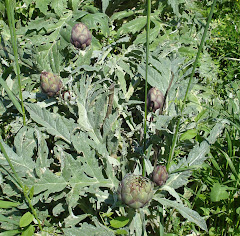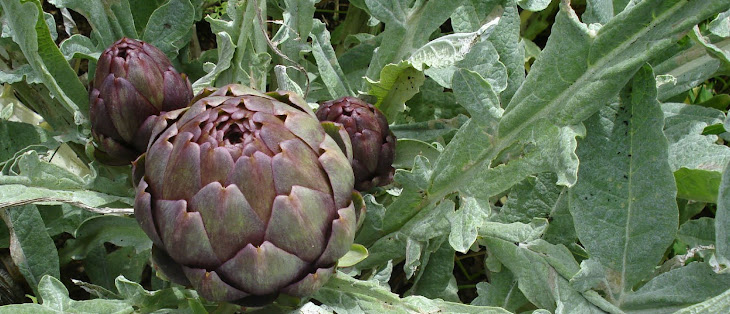One of Gabian's fountains
Gabian is lucky in having a spring, La Resclauze, at the top of the hill above the gardens. For centuries this has been used for watering the gardens and, of course, that is why the gardens are where they are. The stream which runs down from the spring also powered mills which ground corn and wheat for flour and olives for oil. These are all in ruins now, unfortunately, although the Mairie and the municipal council talk of a restoration project. A couple of hundred years ago there were rules about when gardeners could take water from the stream,and each gardener could take water only on certain days. Nowadays there is a reservoir at the top of the hill, which provides water for the village and its three remaining fountains. The overflow from it is regulated. For the past couple of years of drought there hasn

collecting water from the stream
 Today we installed a pipeline from the stream down to our garden to fill our water butts and to water the plants. It needs some more work on it to feed it into the irrigation system which we put in last month, but for the moment
Today we installed a pipeline from the stream down to our garden to fill our water butts and to water the plants. It needs some more work on it to feed it into the irrigation system which we put in last month, but for the moment  we
we
We have a climbing passion flower growing on the shelter over the terrace where we eat and this year, it

tomato, cucumber, green pepper, garlic, basil leaves and oregano flowers all straight from the garden












4 comments:
I think the passion fruit we buy in UK shops is P. edulis. Others are edible but are not supposed to taste as good.
I did try P caerulea when we grew it (the hardy blue one) and the fruit was tasteless in my opinion.
Still it's worth giving yours a try, you might get a nice surprise!
I know there are some yellow passion fruits (I had the in Brasil and they were really good) I'm just not sure if that is the right yellow passion fruit ;-)
I have read somewhere you have to be careful as they contain cyanide
here it is
Toxicity
I would recommend only eating ripe fruit from commercial sources like shops and markets. For more detail re toxicity, especially of the potentially dangerous unripe fruit even in edible species, see Passiflora toxicology. Generally the smell of cyanide and the taste will put anyone off eating the unripe fruit. In the interests of science I have carefully tasted small amounts of ripe fruit of many Passiflora species. Please do not try this yourselves. See the hybrid and species pictures section where the taste of most that have fruited will be recorded. Many like P. caerulea and any hybrids with caerulea as a parent are bland, some taste dreadful (P. kermesina) and some taste toxic (P. trisecta), perhaps safe for certain animals only. There is also a question over the safety of P. manicata fruit. It is known in Ecuador as 'diablito' because of its hallucinogenic properties.
hope it helps.
Thanks to you all for your comments and advice - I think we may not risk it! They look pretty left on the plant anyway.
Post a Comment